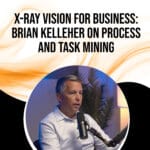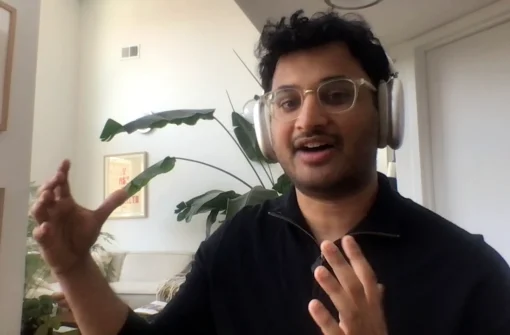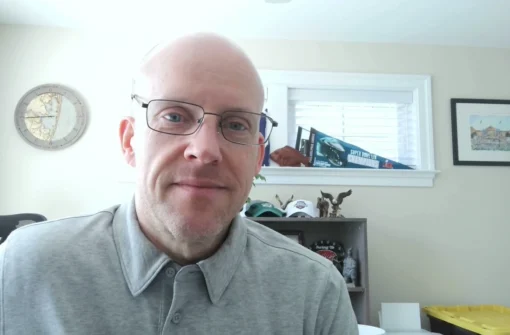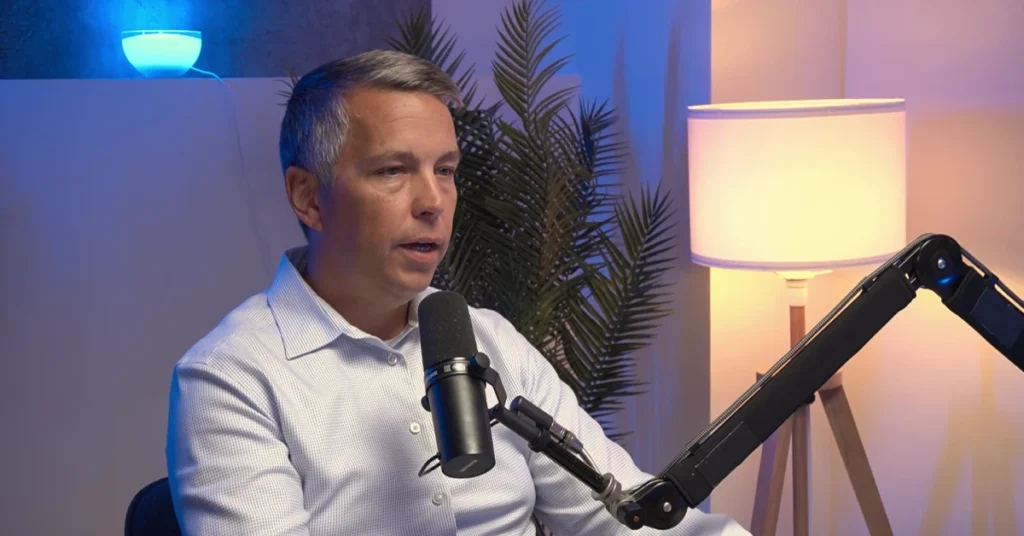
X-Ray Vision For Business: Brian Kelleher On Process And Task Mining
Monitoring and analyzing how work is actually done in your organization can be an overwhelming task to accomplish. Brian Kelleher, Senior Director of Product at Pegasystems, goes beyond the traditional performance tracking approaches against a predefined set of indicators through process and task mining. Joining Alexandre Nevski, he explores how some leaders leverage and combine these strategies to achieve an in-depth x-ray vision of their businesses. Brian also explains how data mining greatly helps in executing a virtuous and continuous improvement cycle within an organization.
Pega® is a trademark of Pegasystems Inc. Please visit https://www.pega.com to learn more.
Transcript
How do you know how work gets done in your organization? What methods do you use to keep your fingers on the proverbial pulse? In my experience, a typical approach is based on one part reports, tracking performance against the predefined set of indicators, one part business analysis, conducted from time to time for a project or other, and three parts gut feel. In this episode, we’ll explore how some leaders choose to go further with what could be described as an X-ray vision for business.
I sat down with Brian Kelleher, the Senior Director of Product at Pegasystems, and asked him how real-life organizations leverage process and task mining. He shares vivid examples that speak to the diversity of use cases and articulates a compelling vision where a virtuous continuous improvement cycle is made possible by the mined data. Brian is a visionary executive leader with over two decades in technology strategy and development, specializing in product management, engineering, and service delivery. He’s widely recognized for his ability to lead high-performing teams and for his role in the successful acquisition and integration of Everflow. Without further ado, here’s my conversation with Brian Kelleher. Brian, welcome.
It’s good to see you again. Thank you for having me on your show. This is great.
Introduction
Thank you for taking the time. I was looking forward to sitting down with you because this conversation is going to tie in well with another theme that I’ve had in the previous episodes. Another guest who was talking about experience design underscored how important it is for them to have real data available, which might be difficult in the first initial stages of a digital transformation. I’m guessing that designers are but one group of stakeholders that can benefit from data mine from processes and tasks. From your perspective, what are the roles and organizational functions that typically ask to have that capability?
There are a lot of different roles that can benefit from processes and task mining. One of the key ones that we see come into play is IT. Technology partners are trying to figure out where they can make technology improvements in business and operations. Those are usually critical stakeholders because they’re the ones who are talking to the customers every day and are feeling some of the pain points. I also think there are some other ones with some of the people who are doing the work themselves, how could process and task mining be used to help improve their daily lives, and give them a voice about some of the struggles that they’re going through on a regular basis.

This is a good perspective for us to set the context with our audience from the perspective of an employee working in operations before the widespread adoption of process and task mining, what might be going on in their day-to-day work, which later might be considered or identified as being opportunities for improvement.
People don’t understand how hard it is for employees to get their work done every day. We did a study back in 2018. We found that the average person uses 35 different applications every day to get their work done. Isn’t that crazy? Guess what? They switch between those applications 1,100 times every day. Can you imagine how hard that is to get work done? The reason they have to switch between those different applications is that they have to become integration points between technologies that may be disparate. They’re having to do a lot of duplicative work like keying in data into multiple different screens. Maybe they’re having to swivel between those 35 different applications to get the information they need to get the work done every day.
The average person uses 35 different applications every day to get their work done.
Mostly this is toggling between applications. Swivel is the expression that I guess you use. Are there any other types of activities that surface when process and task mining capabilities are deployed?
Yes. Process and task mining, if you’re not familiar with it, is using data to tell the truth about how work is getting done. That’s one of the biggest things that we see. It’s eye-opening for the operations and everybody because when they draw a process map of what they think the process looks like, it’s usually pretty clean, “They go here and then they go here,” and then they swivel back and forth maybe through some decisions. When we load the data in, it’s much more complicated and much messier than what they originally envisioned. That’s where the opportunity lies. How can you get as close to that pristine map that was originally put out there?
Echoes Of Innovation
In this segment, we use storytelling to bring our audience authentic insights. However, I always have to warn my guests to use discretion with names and specifics to honor confidentiality agreements and respect the privacy of the people involved. With that in mind, can you think of a story that you can share with us that would illustrate how task and process mining leads to an improved experience for customers and employees?
I have one of my favorite stories. I tell this all the time. We were working with a major healthcare provider here in the US. They had a very expensive process that involved nurses. Every time this process ran, it cost about $6,000 for the process. They used process mining to look at the process and found that the nurses were following exactly the steps that they had laid out for the process, but they still couldn’t figure out where the inefficiencies were.
They had some over-the-shoulder conversations with the nurses and still didn’t find anything. They deployed task mining out to those nurses desktops and they found out that 30% of the time that they were working in that process, they were using Microsoft Word. They came back to me and said, “This can’t be true. We talked to them. Microsoft Word is not part of the process. There’s no way.” I asked them to humor me, “Can you go talk to the nurses and ask them, ‘Are you using Microsoft Word?’” Sure enough, the nurses were like, “We’re using it.” They were like, “Why are you using it? Why didn’t you tell us you weren’t using it?” The nurses said back to them, “We weren’t supposed to be using it so we didn’t want to tell you.”
This is back to the truth about the data and understanding what’s going on. What they found out by using process and task mining together was their process had five different steps into it. At each step, if the nurses hit save the system went down or didn’t save correctly, they lost all of their work. They’re duplicating the entire process in Microsoft Word so that if at any point in that process, the process failed, they could go back and recreate the case that they were working on. That was one of the best examples I’ve seen of process and task mining coming together to tell the whole story.
First of all, the benefits are clear. The fact that users cannot fully trust the applications that they use and therefore resort to Word in this case, but very often I guess it’s posted or something else, certainly resonates with my experience. If you can share, youI got this organization to start looking into this, what was the trigger that served for them to start looking into the data analytically rather than through some other way?
A lot of it came from they were using some of the old traditional methods that people use to understand how work is getting done. They were doing interviews. They were probably listening to whoever was complaining the most and they weren’t seeing the return on the investment that they were making that they thought because they were making decisions based on what we consider bias, “The squeaky wheel gets the grease,” as we’ve all heard before. They said, “Let’s take a look at the data, see what the data tells us, and then make a decision where we go from there.” That was the point for them where they wanted to find operational efficiencies. They knew they were out there but they weren’t getting the results they wanted on the typical analysis methods they were using before.
How about the other challenges that organizations face in the initial stages? I suppose there must be some issues with privacy and concern about privacy.
Pretty much every client we work with, the very first question is, “What are my employees going to think about this? Is this Big Brother? Are we going to be collecting all their personal bank details off their computer?” One of the things that we try to emphasize is you need to be upfront and open with your employees about, “What are you trying to do? Why are you trying to use task mining to collect data and what are the end results? What’s the goal that we’re going after as an organization?”
The organizations I’ve worked with have used this almost as a hammer or a correction tool. They don’t have the same results as the ones that have been open and upfront about how they’re doing it, and then they show results. We worked with another healthcare payer here in the US and they had a couple different groups that they were deploying our the task mining too. One of the groups was a big-time detractor. They were like, “We don’t want this. This s is spying. We don’t want this out there.”
The organization said, “Why don’t you give us a couple of months, let’s put the software on there. Once you see what the results are, we’ll share with you what the data looks like.” That’s another important piece, being transparent with the data that you’re collecting. This group ended up becoming the biggest advocate for task mining and they said, “This helped improve us because we were able to make some changes that removed the roadblocks that were keeping us from getting our work done every day.”
In both stories you’ve shared, is there a lot of variability in how organizations go about it? Does deploying this type of technology end up being a bit of an adventure or is it a rather predictable implementation that yields results consistently?
A lot of it has to do with the outcomes that the organization is going at. One of the things that we typically see, obviously process and task mining can be used to help reduce costs and make the organization more efficient, but it can also be used to help create more value in the organization. We worked with a bank down in Brazil that was a mortgage loan operator. They were able to look at their loan approval process using process mining. They hadn’t even gotten to task mining yet.
Process and task mining can help reduce costs and create more value in an organization, making it way more efficient.
They were able to streamline that process in a way that gave them a competitive advantage against other people in their industry and their same peer group. That was a little bit of a different adventure than, “I’m going to go look at nurses processes and figure out why is the process running so long.” You have to tie the process and task mining initiative to some business outcome, what the goals are of the organization, and how you can use it more of as, as a strategic tool, as opposed to, “I’m just going to go look for technology to pull out.”
It certainly sounds like in one case, it would’ve been driven from an operational excellence perspective, whereas the other example you gave is more strategic. There’s definitely like, “We want to be able to have our customer experience have faster turnaround times,” or something like that. Is that what you mean?
That’s exactly right. There are a lot of different use cases that we’ve seen out there whether it’s customer journey analysis. As you said, we are more strategic and creating more value by streamlining the customer operations or, “How can I make my organization run more efficiently?”
To finish, what about all the use cases around transparency, not controlling in the sense of control of individual employees, but maybe compliance in that respect? In your experience, are organizations gaining or benefiting from this technology when they are in a highly regulated environment?
One of the biggest use cases for process mining is process conformance. That comes into play with what you said. If you have a process where a specific step or multiple steps are missed because somebody skipped it or whatever, they could be subjected to regulatory fines or maybe they’re missing SLAs. That’s where another use case that process and task mining play well together to help you manage and understand, “Are they following the golden process that you want them to follow, and are they skipping specific steps along the way that could be costing you money down the road with fines or regulatory needs?”
Before we move on to the next segment, if you find these tales of innovation valuable, please like and subscribe to help us grow our audience.
Blueprints Of Innovation
In this segment, we define the tools and methods that we might have referenced before. In our case, we’ve been talking about process and task mining. Why don’t we start by defining task mining? Can you give a brief overview for somebody who is not technical?
Task mining is all about going deep into the work that is happening on the desktop. In our typical scenario, we will have an agent that sits on the desktop and it’ll generate event logs from that desktop and tell you how people are getting about their day, what applications they’re using, and how they’re using those applications. We can take that information and put that in an organized fashion to show you “a day in the life” view of what an employee’s day looks like and how they’re getting work done.
In the introduction, you mentioned 35 applications on average from data. This is that perspective of let’s say an employee representative in a contact center or something like that, and what their workday looks like.
It’s typically a contact center and back office. It gives the employee a voice because a lot of times, people don’t understand what their days look like. For them to have a voice on their daily pain points goes a long way.
The other example you gave where the voice that you give them is also helping them say things that, for one reason or another, they couldn’t get across previously. Let’s talk about process mining. How is that different?
Process mining is a discipline that sits between data mining and process excellence. It allows you to use data to understand how processes are getting executed by your core systems. You think of a core system, that could be like Pega, Salesforce, or other applications where they collect event logs. Each of these systems will keep traces of how work is getting done. We take those logs that are generated by those systems and we will use that information to create a map of how the work is getting done like, “What steps is it following? Are there rework loops happening? Are there potential bottlenecks in that process?” We use that information to provide analytics back to show you at the work level across the enterprise what that end-to-end process looks like.
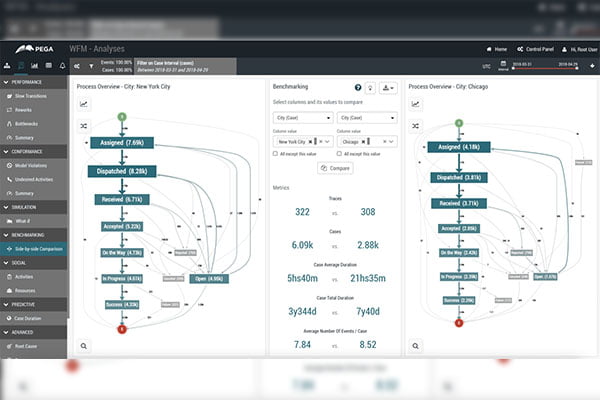
It sounds like it is the perspective of the organization and the outcomes that it’s trying to achieve. Can it also be used to understand the customer experience?
Yes, exactly. A lot of times you’re looking at the organizational level, like this particular piece of work, I got an invoice and how’s that invoice moving through the organization as it works? You can also look at the customer journey. What does the customer journey coming in look like when they’re applying for a credit card, loan, mortgage, or whatever it may be? Understand what that customer journey looks like and are there things that you’re doing to your customers as an organization that may be driving them to churn faster, maybe driving them to abandon things in the cart, or whatever it may be? Thinking back to not only operational excellence but also the strategic view of it and how I can create more value for my customers.
How do the two disciplines interact? Do you drill down from one to the other or is that a different type of relationship?
They’re very tightly connected. If you think back to the healthcare example I mentioned before, the process mining will give you a wide view of what’s going on across the organization. At certain points in that process, you’re going to need to drill deep into tasks, especially when a person is involved. The two connect very closely when there are those swivel activities. Maybe a piece of work is assigned to an employee and they’re having to go on their desktop and do certain things. Now you can see, “This is why this particular step took so long because someone was having to go do ten different things off of the core system to get it done.”
Process mining offers a wide view of what is happening across the organization to help you drill deep into individual tasks.
Maybe a little bit like dimensions that are complimentary where if you are wondering why a certain part of the process behaves a certain way, you can turn from the side and say, “This is what’s happening behind the scenes.” With process mining, what are the key elements of data and tooling that you need to use?
There are three pieces of information that you need to get started with process mining. You need some identifier for the piece of work, like a case ID. You need the name of the activity which would represent the step that someone is following in that step, and you need a timestamp of when that activity happened. With those three pieces of information, you can start creating process maps. You can do an analysis. Additional attributes about what is that piece of work like maybe the region where it occurred in, the cost to do that piece of work, any of those additional attributes will make your analysis that much better. With those three pieces of information, you can get off and running and start process mining.
It’s not a very high barrier. It sounds like not only can you do this with Pega, but if your business process touches other systems, maybe an enterprise resource planner or something like that, that would be something that you could get from almost any system.
Any of those systems that are systems of record for transactions and things like that. Typically, we’ll have event logs that you can use for process mining. What we do find sometimes is some of the systems that have been built maybe by the company itself or maybe that have been around for a very long time may not have the same level of logging. That’s where task mining can come in and also help complement process mining, give you some more information, and generate those event logs for you.
Innovator’s Playbook
In this third and last segment, we aim to provide our audience with practical advice. Let’s go back to the perspective of a business leader. What is the right time for them to start seeking the process and task-mining capability?
Anytime you want to go and make a change within the organization, that’s the right time. I could be corny and say the right time is now. Everybody is always trying to make a change. If you’re trying to understand what your employees are going through or you’re looking to make your customer’s lives better, those are always good things to do.
Anytime you want to make a major change in your organization is the right time to do so.
A lot of times what we’ll see our customers do is they’ll look at process and task mining to migrate off of legacy technology to some more standard structured technology. They’ll look to optimize processes that they already have within Pega since that’s where I’m at. They’ll look for ways to introduce some more automation. The last thing that I’ve started to see a lot more of is they’re trying to create this more operation-centered type view of processes, understand where the work is, and how can they maybe optimize how work is flowing in the organization.
In a call center world, there’s always somebody taking a look at where the calls are flowing and how that’s going. That’s the next phase and where things are going with the process and task mining, and understanding where work is and how it’s going. You could start down any of those paths at any moment. There’s never a shortage of things to do in an organization and ways to make things either more efficient or make things better for your customers and your employees.
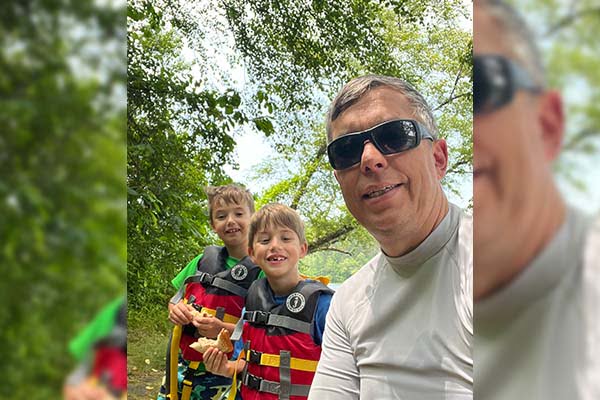
In one of your articles, you are making the point that process and task mining isn’t a one-and-done activity. I quite like that expression and instead, it’s part of a continuous improvement like a cycle. How should a business leader visualize that cycle with process and data mining involved?
I look at process and task mining being the beginning of that cycle. Use process and task mining to understand and discover what’s going on in your organization, and then you can very quickly know, “Where do I need to put in orchestration for my processes?” You can continue to do analysis there to understand, “Where do I have opportunities to optimize?” You then go back around. It’s a circle. Those things play well together and process and task mining plug in along the way.
I mentioned that one of the previous guests was talking about how important it was to get data for them. One of the key opportunities as far as I’m concerned here is that whether you are in design, process optimization, or any other function, it is not everything to get data but it is a prerequisite. Otherwise, those conversations are too abstract or opinionated, which is fine but it’s best to have informed opinions.

That’s one of the promises and the things that you see with process and task mining. You’re using data to make decisions as opposed to going off of people’s opinions or biases. I’m going to tell you another quick story about an organization we work with where they have task mining on thousands of desktops and they’re also using process mining. What they’re doing is they’ve created these little process improvement centers throughout the company.
Process and task mining allows you to use data to make decisions instead of relying on people’s opinions and biases.
They’ve enabled people closest to the business to be process miners so that they can start to use data to make decisions on where they’re going to make improvements. Some of the improvements may not always be introduced through automation or put in a workflow. Maybe, “I need to go train these tellers on how to do their work better,” or maybe something else. The more you can get the information out and get the data out to people, the better. The results are multiplied by each other in that scenario
That’s very inspiring. It leads me to another question that I wanted to ask. Staying on the topic from a practical perspective, let’s say a business leader wants his team to be able to leverage the data, what resources do they have available? Where should they start?
We found the most success when you have a good partnership with the business and IT. A lot of times, the business folks aren’t the ones doing the development work. The IT folks may not have all the process expertise to go in and understand what the process is telling you. Those two resources make a huge difference in making sure it’s successful and also the data acquisition.
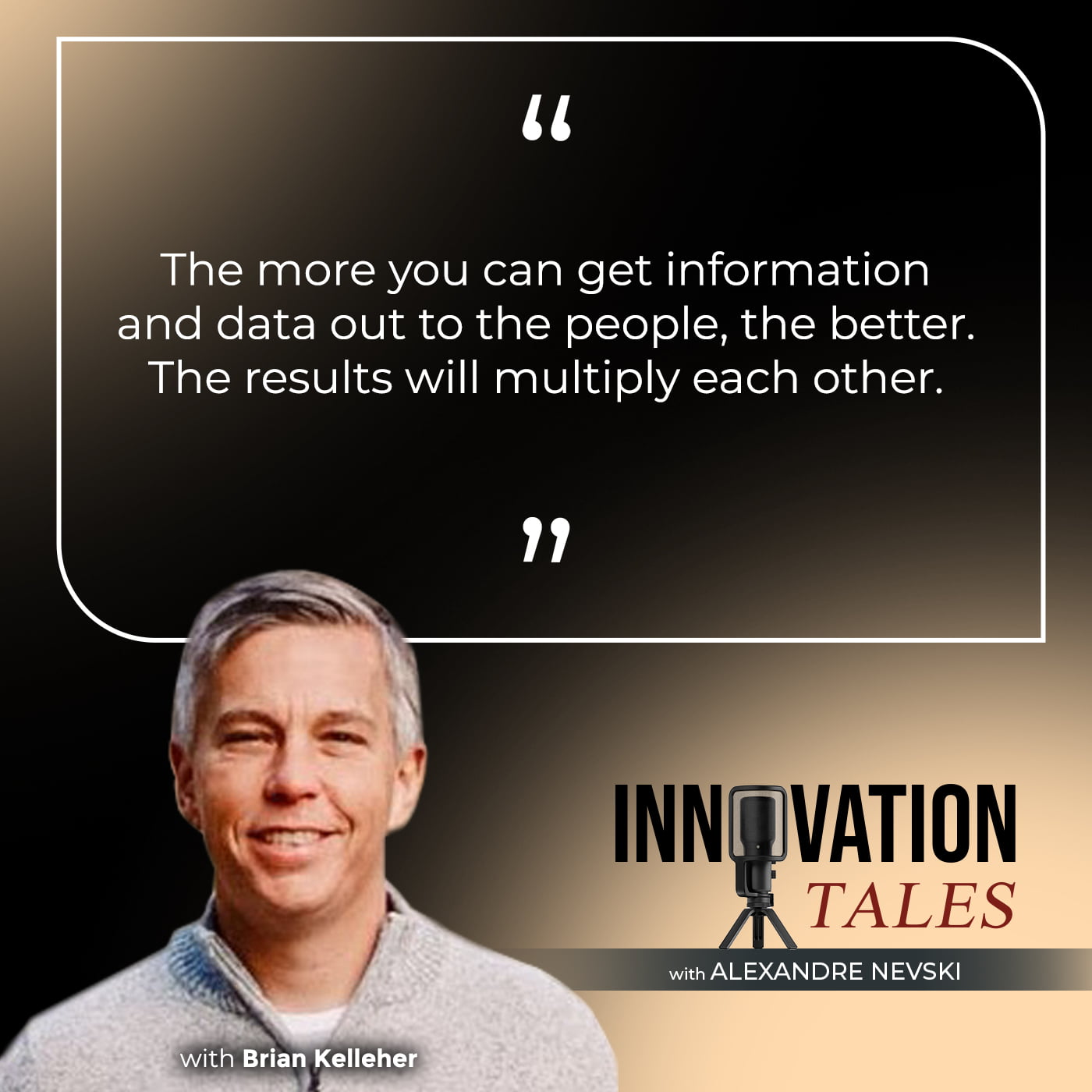
We’ve talked about getting data. That’s a big part of the project, making sure you have the data in the right format and you have the necessary pieces of information as we spoke about earlier. If you can get those things, you’re off to a success. The ones that we’ve seen that work the best are typically co-run by business and IT together because they’re able to pair up on the process.
It’s a general best practice in Pega and other technologies. It does seem to be a recurrent theme. On the side of training from a business perspective, are there specific courses for business people to leverage those tools?
We have a lot of training online. We have courses for both process and task mining that are readily available. There are process mining classes through Coursera and all the regular internet providers. There’s a lot of training. There are a lot of books out there. There is a great book called The Process Mining Manifesto that was written by Wil van der Aalst who’s the godfather of process mining. There are a lot of resources out there and a lot of things you can learn. YouTube is a great resource that shows you a lot of different information.

You’ve mentioned it already, but I was wondering how AI fits into all of this now that there are so many new AI capabilities. At Pega especially, does that change the game for process and task mining?
It does. There are a couple of different areas where we’re honing in on AI, especially the generative AI capability. Process mining already has AI built into it. We’re making decisions and using algorithms to determine root cause analysis, doing simulations and predictions about how a process may perform when you make changes. That’s been around for quite a while. That’s typical AI stuff.
With generative AI coming in, we now have the ability for you to have a conversation with your process. You can ask business questions to process mining without having to go directly into the dashboards and ask things like, “Tell me where my bottlenecks are with this process,” and then you get an answer in plain text. That helps lower the barrier of entry for process mining.
We were talking about training a minute ago. You may not need as much training because anybody could become a process miner. You just have to ask a question. I’m sure you’ve probably seen our blueprint announcement that was launched earlier in 2024 and that’s been a huge success. Think about if you can link process mining to help inform creating blueprints and help speed up that legacy transformation. That’s another area where generative AI and process mining are going to play well together where you can take that information and use that to help accelerate the development of the structured applications. The last area is just how we help make data acquisition easier. There are a lot of opportunities there. That’s a big part of the process,
It can serve as an accelerator to go and acquire the data from legacy systems. As we’re about to conclude, are there any final thoughts that you’d like to leave our audience with?
I want to go back to something we talked about a little bit ago. A lot of times I get asked, “What is the difference between process and task mining? When do I use one versus the other? If I use task mining, I don’t use process mining.” In the article that I wrote, that couldn’t be further from the truth. They’re not mutually exclusive. They’re compliments of each other. If you want to do continuous optimization and improvement right, then you need to have both because there are going to be times. It’s like if you’re going to go build a house, you’re not always going to have a hammer. You don’t always want to use the hammer. Sometimes you need a screwdriver. Sometimes you need to drill.
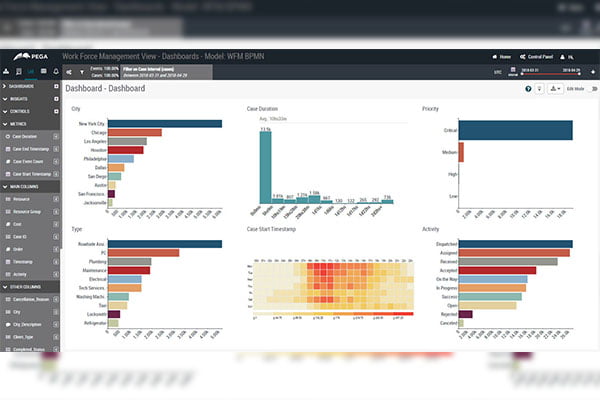
There are different tools that you can use for different scenarios because you may want to first try to figure out, “What does my work look like across the organization, and then where do I have opportunities to maybe streamline those particular processes?” You may have opportunities where you’re like, “I have these spinoff moments where people are having to get out of my core applications, my structured applications and do work on the desktop.” Both of those drive value. The only way you’re going to be able to see what’s going on across your enterprise and deep into the enterprise is if you have both process and task mining. That’d be the one last thought I’d leave everybody with because that’s critical to this whole thing, and is going wide and deep with the two.
Thank you very much.
Thank you. This has been fun.
—
I hope you enjoyed our deep dive into process and task mining with Brian. His expertise shines a light on how organizations can move beyond gut feel and traditional reporting to embrace a future with precise and actionable insights. Brian’s stories of success illustrate how a combination of technology and strategic vision can lead to transformative business results. As you reflect on this episode, consider how these insights could apply to your organization. Don’t forget to like and subscribe or rate and review the show on your favorite podcasting app. We look forward to your feedback. In the meantime, we have more topics and guests lined up, so stay tuned for more tales of innovation that inspire, challenge, and transform. Until next time, peace.
Important Links
- LinkedIn – Brian Kelleher
- https://www.Pega.com/insights/articles/how-process-mining-task-mining-work-together
- https://Link.springer.com/book/10.1007/978-3-662-49851-4
About Brian Kelleher

Brian Kelleher is a visionary technology strategist and executive leader, currently serving as the Sr. Director of Product for Process and Task Mining at Pegasystems. With over two decades of experience in technology strategy and development, Brian has a proven track record of leading high-performing teams to achieve remarkable results. His expertise in product management, engineering, and service delivery, coupled with his role in the successful acquisition and integration of Everflow, highlights his ability to drive innovation and transformation.
